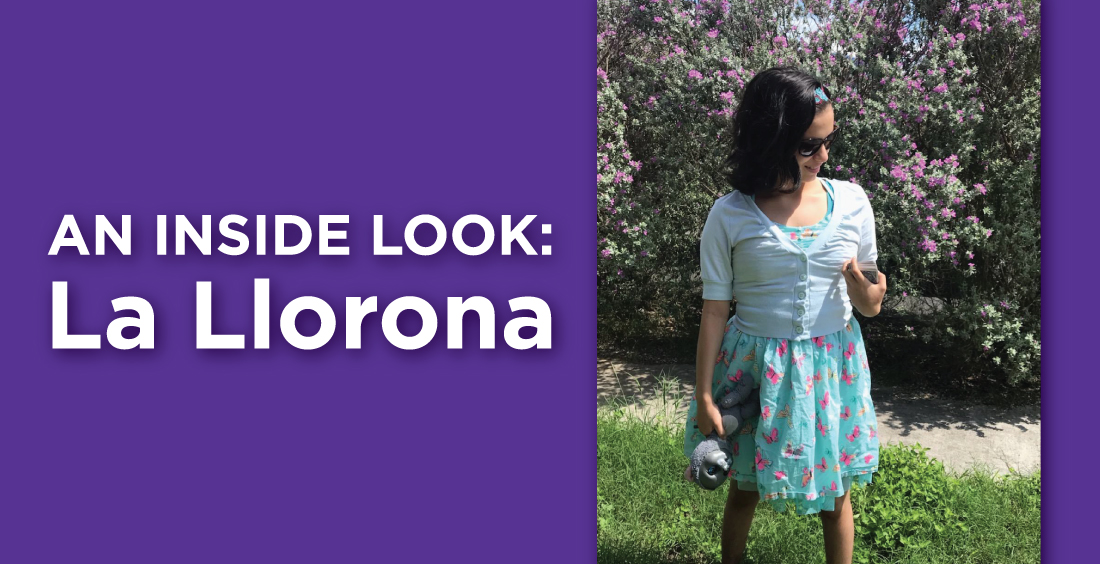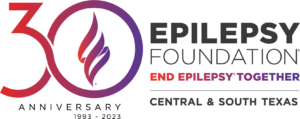
To spotlight the people the Epilepsy Foundation Central & South Texas helps, check out our weekly blog called, “An Inside Look.” This week read about Cindy Garcia, La Llorona, and using art to educate.
Cindy Garcia, also known as La Llorona, is a San Antonio-based artist, mother, and advocate. Her daughter Ani has both epilepsy and autism. Cindy is dedicated to spreading awareness about autism and epilepsy. Through her events, she connects the art community to autism and epilepsy nonprofit organizations.
This Friday, August 9, she’s hosting an art show called The Upside Down, inspired by the hit Netflix television show “Stranger Things” at Brick at Blue Star Arts Complex. Photo proceeds from this event will benefit the Epilepsy Foundation Central & South Texas and help people with epilepsy receive essential low- and no-cost services.
When I spoke with Cindy, she was at Methodist Hospital with Ani, who is experiencing medical issues.
How did Ani get diagnosed?
Cindy: Well, I was at Methodist Hospital with my daughter Ani. At the time, I thought she was having some sort of reaction to something.
I was scared, but I knew what was going on or so I thought. But then, the doctors told me that she was actually having seizures. They diagnosed her with epilepsy.
I was so confused. I couldn’t understand how that could just happen from one moment to the next. All of a sudden she had epilepsy? It made no sense to me.
What did you do to find out more?
I did what any mother does, I went online and started researching. I looked for resources, answers, anything really. That’s when I found your [Epilepsy Foundation’s] website. There were so many links, so much information – types of seizures, what seizures look like – stuff like that. I didn’t know where to begin and a simple internet search brought me to you [Epilepsy Foundation].
Wow, I can imagine how scary that is. I’m really glad that you were able to find us. What made you want to get involved with the Foundation?
Just the fact that I didn’t know where to go, who to call, or what to do made me think, “I have to do something.” There must be so many people like me that have no idea what to do.
The thing that was absolutely ridiculous to me is that I didn’t know there is a 1 in 3 chance that someone with autism can develop epilepsy during adolescence. 1 in 3 is a big number; that’s a big deal.
I’m thinking, if my kid had a 33% chance of developing epilepsy, that’s something I want to know. How is this not being talked about; why didn’t I know this already?
For example, if someone had told me I had a 33% chance of developing cancer after the age of 35, I would’ve looked into that; I would’ve educated myself. I should’ve been told.
So, really, the reason I wanted to get involved with the Epilepsy Foundation is so that I can raise awareness and educate moms like me or artists like me. People need resources, and I want to give the Foundation a platform to give those resources to the people who need them.
What is La Llorona? When did it start?
I started this in February of 2017 or 2016? Originally, I worked with a partner. That didn’t pan out. Every nonprofit I chose to benefit with art events usually had to do with autism or epilepsy, because that’s what I want to educate the community about and I think that bothered her.
My intention with La Llorona was to create a platform where people in my community, mothers and artists, had easy access to nonprofits who have helped me. I just want to be able to provide resources for people who are in my shoes, and if I could combine my art with that, even better.
What do you hope to achieve with this art show, The Upside Down? What are you most excited about?
I feel like my life was turned upside down when my daughter Ani was diagnosed with epilepsy. I’m so blessed that I’m able to afford her vitamins, her medications, and her CBD. For others though, it isn’t so easy. I love that the Foundation helps families in need with things like medication.
There’s so much help the Foundation has to offer. Knowing how devastating it is to hear the diagnosis, to be in the situation, I hope I can bridge a gap between the Epilepsy Foundation and the community.
That’s amazing. I think your story will really resonate with our families. Tell me, what does epilepsy mean to you and what do you want people to know about it?
If there’s anything that I want people to take away from this event, it’s that 1 in 3 statistic; 1 in 3 people with autism will develop epilepsy during adolescence. 33% is a devastating number and it’s crazy that I didn’t know about it.
I consider myself very knowledgeable about autism, and somehow I didn’t know about that 33%. That large percentage means that this is prevalent. That’s why it’s so necessary for people to be educated. Had I been told about those odds, I would’ve been more prepared.
Nothing truly prepares you for something like this, but if I had known then I wouldn’t have been so lost. I just need people to know that the Foundation is there to help them with services and information and that they’re not alone.




Comments are closed.